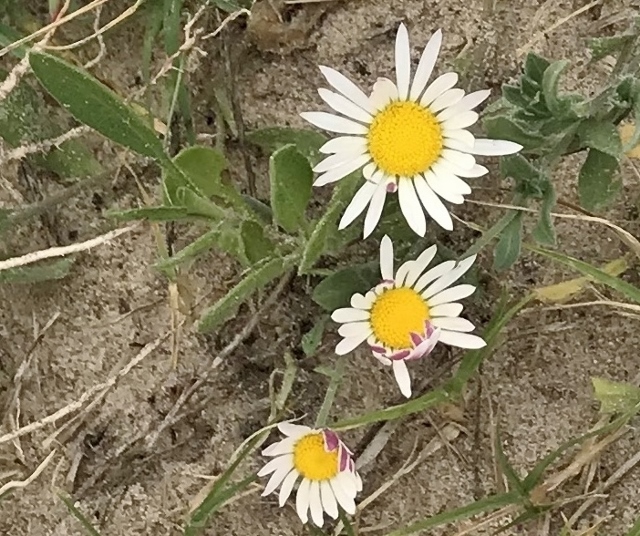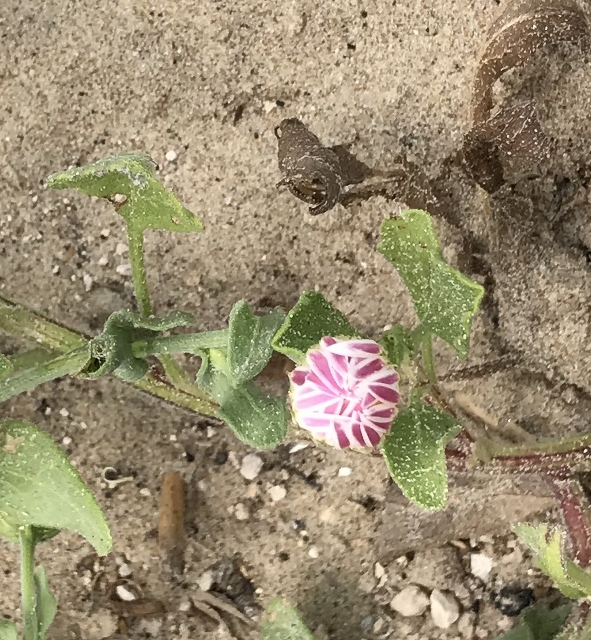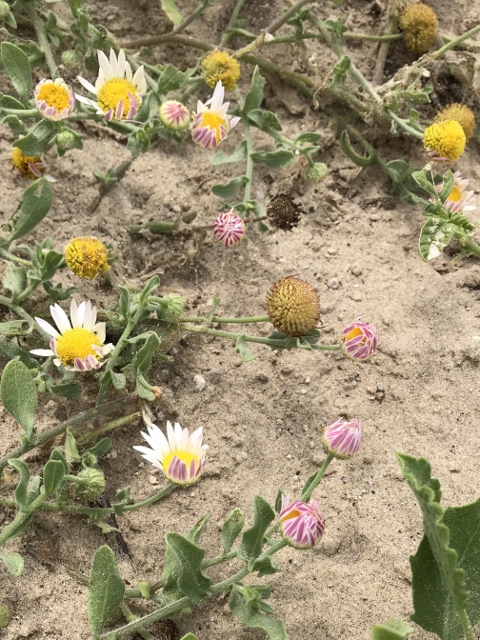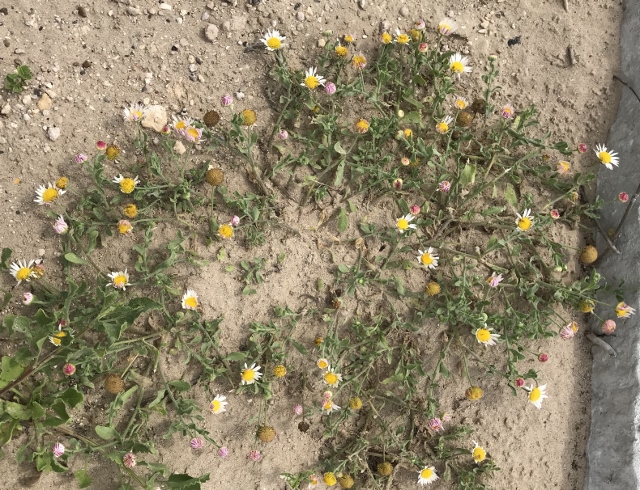Story and photos by Anita Westervelt, Texas Master Naturalist

In the rush to get over hot sand and into the surf, the plant life of a dune is often overlooked.
Fun surprises take shape when a more focused look at a dune’s plants are studied.
Just as in a fallow field alongside a road, a dune is made up of a great variety of plants if one takes the time to look at them individually. The plants come in various shapes. Some are upright, some full and shrubby, others may sprawl or wander vine-like, weaving in and around other plants. Some plants are tall and wispy, too delicate seeming for the harsh dry, salty, windy, relentlessly sunny location of a beach-side dune.
And yet, looked at closely, the colorful array of blooms in a dune can be quite surprising. Leaf colorations range from greens to grays. Stages of blooms may present what look like different plants.
One plant, sporting many personalities, was the highlight of a recent visit to the dunes next to the University of Texas Rio Grande Valley Coastal Studies Laboratory at the Isla Blanca County Park beachfront on South Padre Island.
The mixture of bloom stages of this particular plant made it a challenge to identify. The pink-and-white-striped tiny ball of the bud stage looked like something from a bowl of Christmas candy. As the flower heads began to open, white petals (ray flowers) were revealed with bright yellow centers (disk flowers). The underside of the white petals remain a dark violet-red when the flower is fully open.

The fun mystery plant turned out to be lazy daisy (Aphanostephus ramosissimus). A sand and sun lover, it is an annual plant that grows close to the ground. The flowers begin opening about mid-morning, which some say is how it gets its name.


Lazy daisy is native to the southwestern and south-central United States and central and northern Mexico. It is prevalent in our coastal regions and inland. It is high heat and salt tolerant with low water requirements. An easy plant to propagate by seed, it is an excellent species to include in a rock or xeriscape garden.
